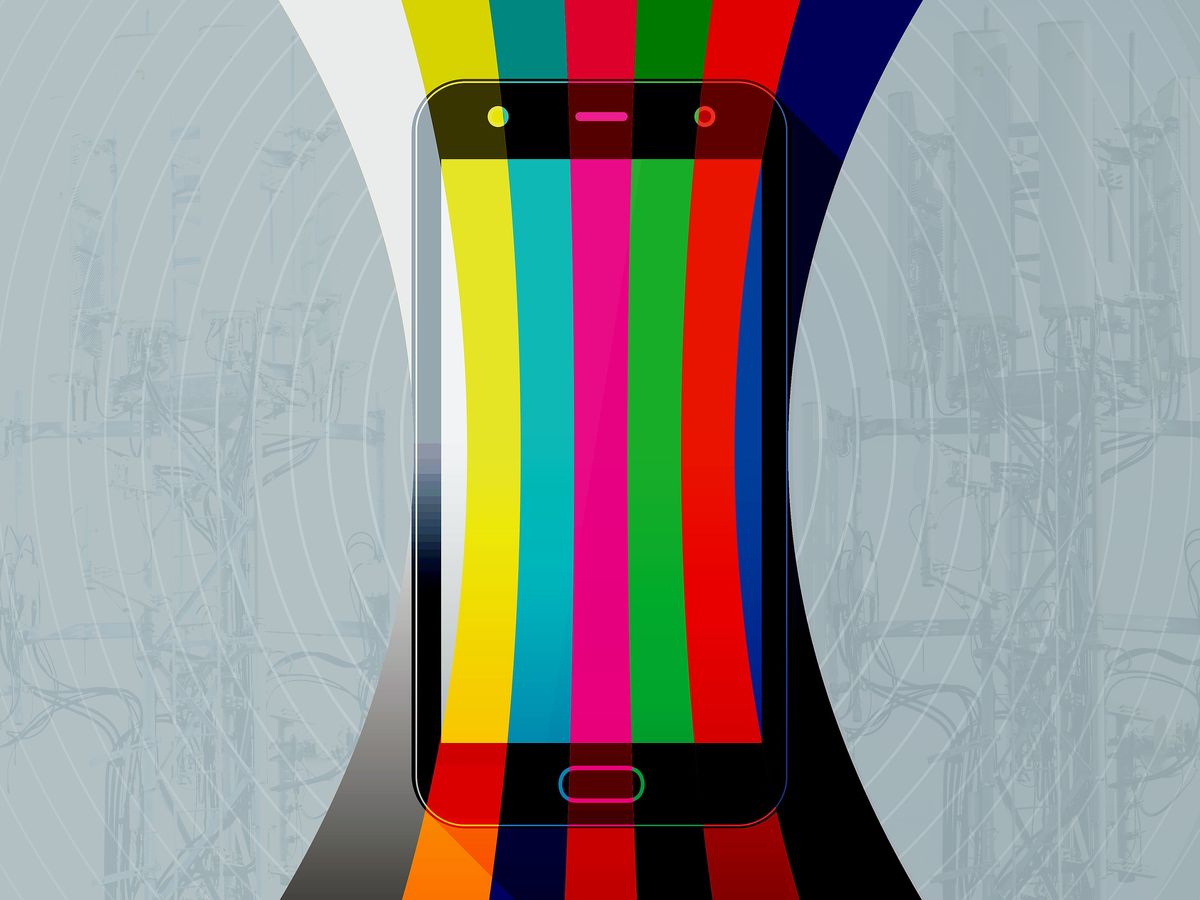TV broadcasters may have a new way to reach the cordless generation: 5G. In July, the Federal Communications Commission (FCC) granted a six-month experimental license to a low-power television network in Massachusetts to transmit video and other data one-way following the 5G protocol over a portion of the ultra high frequency (UHF) band via television towers.
If television broadcasters can meet some of consumers’ voracious demand for Internet video streaming using TV hardware and spectrum, it will free up some network bandwidth in spectrum previously used for two-way cellular signals and create new business opportunities. The FCC granted the Sinclair Broadcasting Group a similar license in 2021, and Czech telecom CRA began broadcasting to mobile phones earlier this year as well.
Low-power television networks—which already target audiences that major broadcasters don’t—may be able to figure out how to make 5G work.
Transmitting one-way video to mobile devices also offers both governments and businesses another option for transmitting information in emergencies, says Frank Copsidas, the CEO of XGen Networks. XGen operates the low-power television station that will use the new experimental license, along with Milachi Media. “This launch is all about proof of concept,” Copsidas says. “We will create a streaming linear programming station and a data platform which is all about first responders.”
Hypothetically, emergency dispatchers could transmit closed-circuit or drone footage over a private 5G broadcast to emergency responders over a TV broadcast tower, even when the local cellular network is down. Outside of an emergency situation, sports broadcasters could also offload their transmission of an event to the UHF band locally during a major game, putting less pressure on the other frequency bands within the 5G standard.
The UHF band covers the frequencies from 300 megahertz to 3 gigahertz—in the United States, the portion from 470 MHz to 608 MHz is allocated to television broadcasts. 5G networks operate over several frequency bands, such as (in the United States) between 600 and 900 MHz for the low bands, between 2.5 and 4.2 GHz for mid-band frequencies, and between 24 GHz and 47 GHz for high-band frequencies.
“We’ve been watching 5G transform the automotive industry, the retail industry, medical and health-care industries, industry after industry. 5G and television makes just as much sense as the rest of them,” says Jeff Kagan, an industry analyst in Atlanta. Cable TV has been under pressure from Internet streaming for almost a decade, and now streaming services are suffering a post-pandemic decline, Kagan says, so those companies should be looking for another way to reach audiences.
5G isn’t the only new broadcast format being explored for TV. “The major broadcasters in the U.S. are focusing on switching from ATSC 1.0 to ATSC 3.0,” says Copsidas. ATSC 3.0 is the first all-Internet protocol television standard. It launched during the 2018 Winter Olympics in PyeongChang and can transmit 4K-resolution images and high-quality audio. By comparison, TV over 5G probably won’t be as stable or capable, Copsidas says.
However, ATSC 3.0 and TV over 5G may not be in a direct head-to-head competition. A study published in the IEEE Transactions on Broadcasting in June found 5G more expensive than ATSC 3.0, but mobile phones and tablets don’t receive ATSC 3.0 signals, so 5G may reach people in places and on devices where ATSC 3.0 won’t. Low-power television networks—which already target audiences that major broadcasters don’t—may be able to figure out how to make 5G work, including for harder-to-reach audiences, and could provide additional services, such as first-responder platforms like the one planned by XGen.
Indeed, it will probably be possible to decide on the fly how best to transmit a given television signal, depending on where users are and how much demand there is for content at any time. “We already have apps for that, which can analyze where the demand is for a given show, and does it make more sense to send over 5G broadcast or the Internet,” Copsidas says.
The hardware will take a few years to mature, as 3GPP, the global cellular standards-setting body, settles on its protocols for 5G TV signals as part of Release 18 and chipmakers then integrate it into their chips. Those chips will then allow handsets to pick up signals from today’s TV antennas.
Proposals for switching between ATSC 3.0 and 5G broadcasting also date back at least two years and could be a part of future 5G protocols. U.S. Sinclair Broadcast Group began flirting with ATSC 3.0 and 5G convergence with Korean partner SK Telecom in 2019, focusing at the time on vehicle infotainment systems, and has since signed a partnership with Saankhya Labs for a 5G TV test. (Sinclair and SK Telecom’s partnership vehicle, Castera, did not reply to a request for comment.)
“This is something that probably should have started years ago,” Kagan says.
This story was updated on 11 August 2023 to clarify the range of UHF spectrum.
This story was updated on 22 August 2023.
Lucas Laursen is the technology policy editor at IEEE Spectrum. He covers how emerging technologies are changing the balance of power between companies, governments, and individuals. The rest of the time, he worries about his own balance on a bicycle, skis or the side of a mountain.



